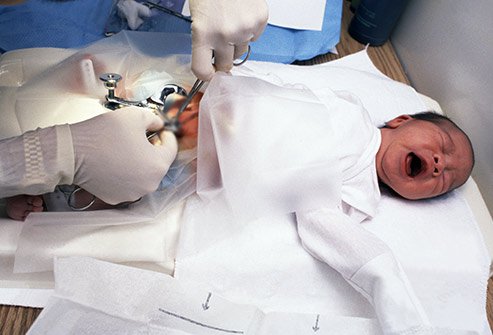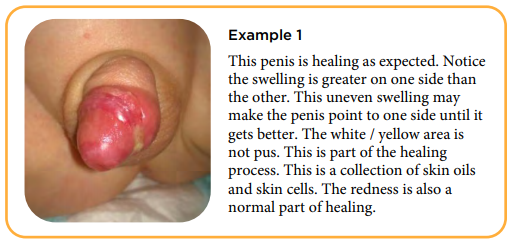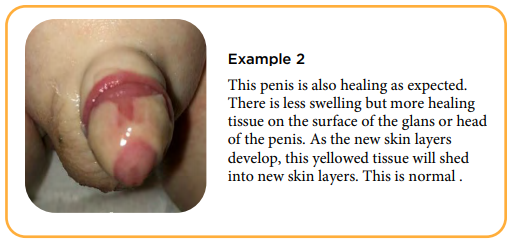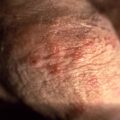Circumcision is the removal of the foreskin from the human penis. In the most common procedure, the foreskin is opened, adhesions are removed, and the foreskin is separated from the glans. After that, a circumcision device may be placed, and then the foreskin is cut off. The relative simplicity of the surgical procedure itself belies the complexity of the conflicting values surrounding this minor operation. The primary ethical question is whether the pain, risks, and costs of routine neonatal circumcision are justified by the potential medical and social benefits to infants who undergo this procedure. Given the strong opposing opinions surrounding circumcision, there is some question as to whether children should undergo the procedure prior to an age when they can provide informed consent on their own behalf. Circumcision in adults is less common and will not be the focus of discussion here.
Why it’s done
Circumcision is a religious or cultural ritual for many Jewish and Islamic families, as well as certain aboriginal tribes in Africa and Australia. Circumcision can also be a matter of family tradition, personal hygiene or preventive health care.
Sometimes there’s a medical need for circumcision, such as when the foreskin is too tight to be pulled back (retracted) over the glans. In other cases, particularly in parts of Africa, circumcision is recommended for older boys or men to reduce the risk of certain sexually transmitted infections.
The American Academy of Pediatrics (AAP) says the benefits of circumcision outweigh the risks. However, the AAP doesn’t recommend routine circumcision for all male newborns. The AAP leaves the circumcision decision up to parents — and supports use of anesthetics for infants who have the procedure.
Circumcision might have various health benefits, including:
Easier hygiene. Circumcision makes it simpler to wash the penis. However, boys with uncircumcised penises can be taught to wash regularly beneath the foreskin.
Decreased risk of urinary tract infections. The risk of urinary tract infections in males is low, but these infections are more common in uncircumcised males. Severe infections early in life can lead to kidney problems later.
Decreased risk of sexually transmitted infections. Circumcised men might have a lower risk of certain sexually transmitted infections, including HIV. Still, safe sexual practices remain essential.
Prevention of penile problems. Occasionally, the foreskin on an uncircumcised penis can be difficult or impossible to retract (phimosis). This can lead to inflammation of the foreskin or head of the penis.
Decreased risk of penile cancer. Although cancer of the penis is rare, it’s less common in circumcised men. In addition, cervical cancer is less common in the female sexual partners of circumcised men.
The risks of not being circumcised, however, are not only rare, but avoidable with proper care of the penis. Circumcision might not be an option if certain blood-clotting disorders are present. Also, circumcision might not be appropriate for premature babies who still require medical care in the hospital nursery or for babies born with abnormalities of the penis.
Circumcision doesn’t affect fertility, nor is circumcision generally thought to enhance or detract from sexual pleasure for men or their partners.
Risks
The most common complications associated with circumcision are bleeding and infection. Side effects related to anesthesia are possible as well.
Rarely, circumcision might result in foreskin problems. For example:
The foreskin might be cut too short or too long
The foreskin might fail to heal properly
The remaining foreskin might reattach to the end of the penis, requiring minor surgical repair.
How Does Circumcision Look Like After 4 weeks?
As with any surgery, circumcision can leave a scar. The circumcision technique you choose often determines what type of scarring may form. Scarring is less likely when the procedure is done during infancy. However, there are ways to reduce the risk of scarring in older children and adults. The first step is to seek out a qualified practitioner. Your doctor or surgeon will be able to walk you through the different techniques available, as well as discuss the different scars that these procedures may leave.
These photos show examples of normal healing after circumcision surgery. You can use them as a guide to help you understand what to expect after your child’s surgery. Every patient and surgery is unique. Contact your child’s health care provider if you have any questions.
Self-care advice
As circumcision is a painful procedure, painkillers such as paracetamol or ibuprofen will need to be taken for at least the first three days after the operation. Children who are 16 years old or younger should not take aspirin.
Circumcision exposes the sensitive skin of the glans (the tip of the penis). In babies, nappies can rub against the glans, making it sore. Therefore, make sure that you tuck down your baby’s penis before putting the nappy in place.
Following circumcision, the penis will be red and swollen for a few days. You or your child may find it more comfortable to wear loose clothing for a while. Petroleum ointment put directly on to the area can also reduce irritation.
After your son has been circumcised, make sure that he does not ride a bike or use other sit-on toys until the swelling has completely gone down. If your son is of school age, he should be able to return to school about a week after being circumcised. However, let his teacher know that he has had the operation.
When to seek medical advice
Following circumcision, consult your GP if:
- there is bleeding from your child’s penis
- your child’s penis remains swollen after two weeks
- your child still finds passing urine painful a few days after the operation
- Older boys and men should also see their GP if they have any problems after having a circumcision.
SEE: Female Circumcision In Nigeria








